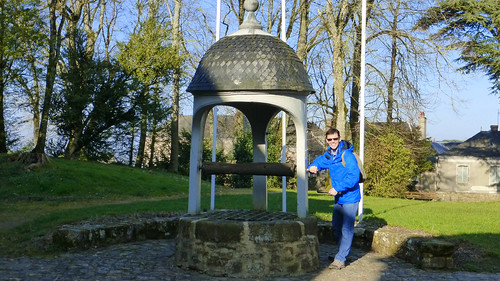
 This peaceful village occupies a picturesque setting on the summit of a rocky promontory commanding the north bank of the Erve.
This peaceful village occupies a picturesque setting on the summit of a rocky promontory commanding the north bank of the Erve. 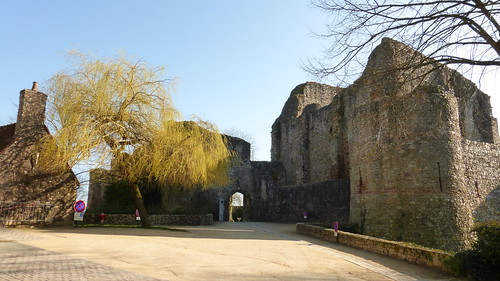 In the 11th century, the viscounts of Beaumont built on the site one of the most important Maine strong points.
In the 11th century, the viscounts of Beaumont built on the site one of the most important Maine strong points. 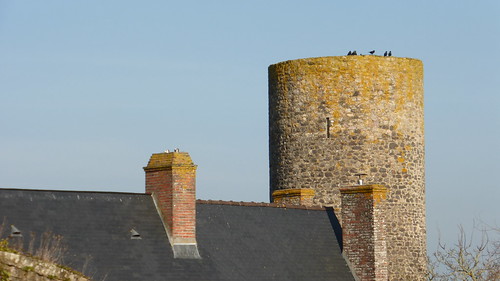 Ste-Suzanne, surrounded with ramparts, resisted the attacks of William the Conqueror. His troops had made their camp at Beugy on the Assé-le-Beranger road.
Ste-Suzanne, surrounded with ramparts, resisted the attacks of William the Conqueror. His troops had made their camp at Beugy on the Assé-le-Beranger road. 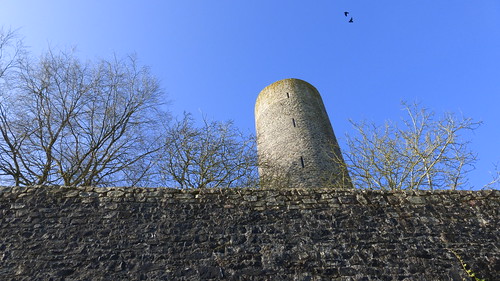 After a siege of three years (1083 – 1086) William abandoned his efforts and, out of respect for his opponent, Hubert II de Beaumont, he returned his lands of Fresnay and Beaumont. During the Hundred Years War the English took possession of Ste-Suzanne (1425) and remained its overlords for 14 years.
After a siege of three years (1083 – 1086) William abandoned his efforts and, out of respect for his opponent, Hubert II de Beaumont, he returned his lands of Fresnay and Beaumont. During the Hundred Years War the English took possession of Ste-Suzanne (1425) and remained its overlords for 14 years. 
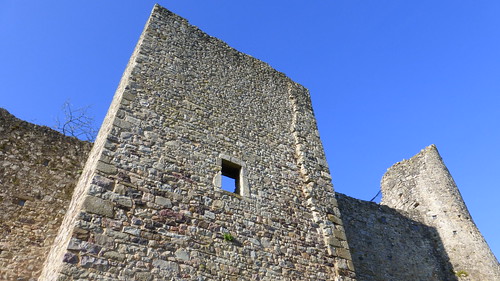 A walk along the ramparts of the city offers visitors attractive views of the river below. The town boasts several houses built in the Middle Ages and refurbished during the following centuries.
A walk along the ramparts of the city offers visitors attractive views of the river below. The town boasts several houses built in the Middle Ages and refurbished during the following centuries. 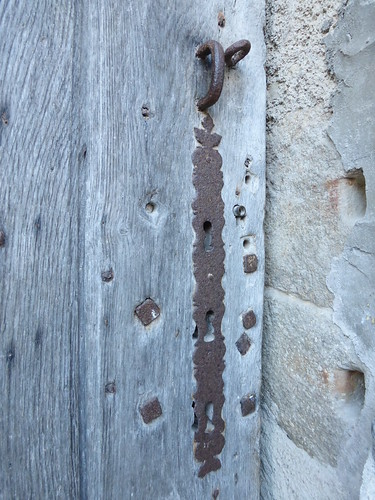 This is the salt loft, now turned into a dwelling. It keeps its former door equipped with three different locks. Three notables, each of them owning a keep, were needed to open the building. It was from here that residents obtained their salt provision and paid the unpopular salt tax known as the “gabelle”.
This is the salt loft, now turned into a dwelling. It keeps its former door equipped with three different locks. Three notables, each of them owning a keep, were needed to open the building. It was from here that residents obtained their salt provision and paid the unpopular salt tax known as the “gabelle”. 
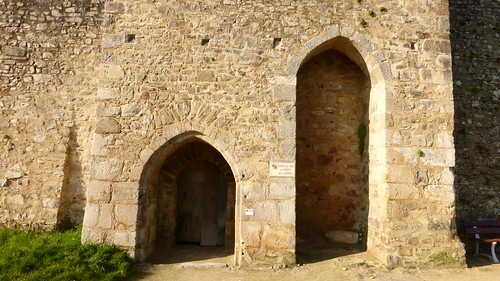
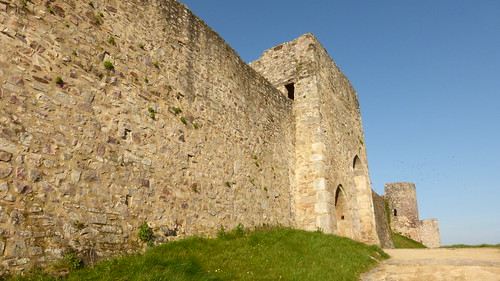 From the Middle Ages to the 18th century, the castle of Sainte-Suzanne had a military function, visible in its fortifications. This is the Iron Door or secondary entrance to the castle.
From the Middle Ages to the 18th century, the castle of Sainte-Suzanne had a military function, visible in its fortifications. This is the Iron Door or secondary entrance to the castle. 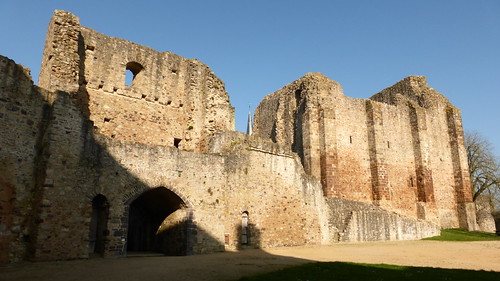
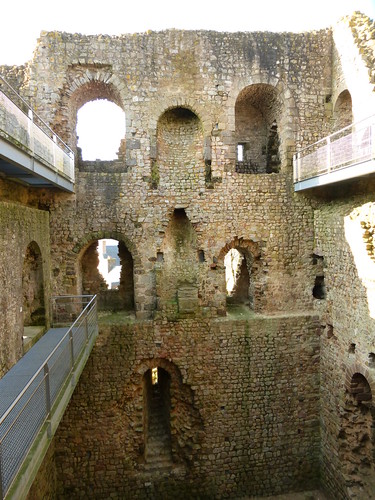
 The most impressive piece of architecture remaining from the original fortifications is the 11th century keep. Between 2001 and 2003, the keep was restored and archaeological observations were made on the masonry to learn about their transformations. It is impossible to know the height of the original keep because the summit has long since disappeared. The ground floor was not a living space but a storage place. The narrow openings served for light and air but not for shooting. The first floor was considered the noble space, used for reception. The room of the second floor is the highest and widest of the building and might have been a private room reserved to the lord and his family.
The most impressive piece of architecture remaining from the original fortifications is the 11th century keep. Between 2001 and 2003, the keep was restored and archaeological observations were made on the masonry to learn about their transformations. It is impossible to know the height of the original keep because the summit has long since disappeared. The ground floor was not a living space but a storage place. The narrow openings served for light and air but not for shooting. The first floor was considered the noble space, used for reception. The room of the second floor is the highest and widest of the building and might have been a private room reserved to the lord and his family. 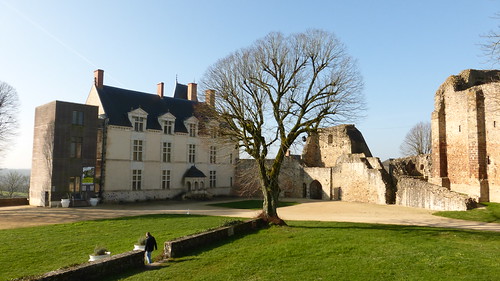 Next to the keep is the more recent Renaissance lodge. In 1608, Guillaume Fouquet de la Varenne, new lord of Ste-Suzanne commanded the construction of a new castle. The works probably lasted about five years yet the northern part is the only one to be finished.
Next to the keep is the more recent Renaissance lodge. In 1608, Guillaume Fouquet de la Varenne, new lord of Ste-Suzanne commanded the construction of a new castle. The works probably lasted about five years yet the northern part is the only one to be finished.  The interior is now the Centre of Interpretation of Architecture and Patrimony (CIAP).
The interior is now the Centre of Interpretation of Architecture and Patrimony (CIAP). 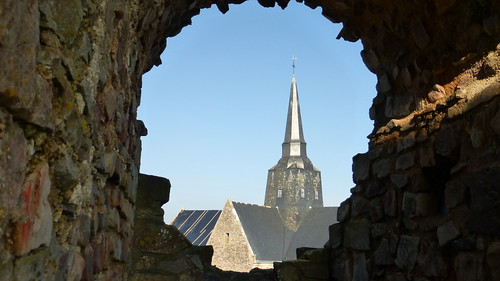
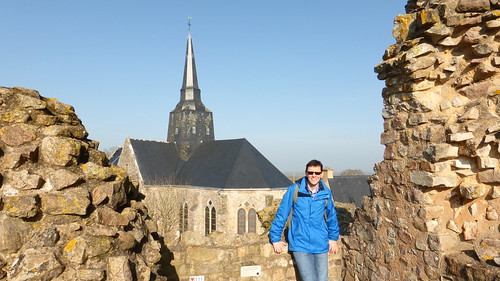 The church of Ste-Suzanne, consecrated in 1553, was rebuilt in 1824 for the most part.
The church of Ste-Suzanne, consecrated in 1553, was rebuilt in 1824 for the most part.


